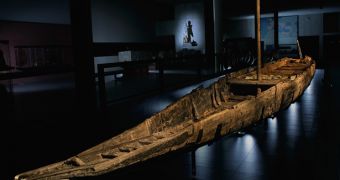National Geographic has published an impressive video that explains how an ancient Roman shipwreck was lifted from the bottom of the river Rhône in France.
The wreck was discovered in the summer of 2004 by a diver who was examining the bottom of the river in Arles area in hopes of finding archaeological riches. The diver, named Pierre Giustiniani, spotted a mass of wood which proved to be a 102-foot (31-meter) long Roman barge.
In the first century, Arles was a thriving gateway to Roman Gaul. “It was a city at the intersection of all roads, which received products from everywhere,” says David Djaoui, an archaeologist at the local antiquities museum, cited by National Geographic.
The sunken Roman boat has remained virtually intact after 2,000 years in the mud in the river Rhône, near Arles. Experts explain that the mud and silt at the bottom of the river actually helped preserve the wood after all these years. However, water dissolved the cellulose and filled the wood’s cells, leaving the whole boat soft and spongy. That's why the process of lifting it from the water was very difficult.
After elaborating a complex plan, a team of underwater archaeologists raised the shipwreck from the water in 2011, 2,000 years after it had sunk.
The boat was called Arles-Rhône 3 and is now exhibited in a brand-new wing of the Musée Départemental Arles Antique.

 14 DAY TRIAL //
14 DAY TRIAL //